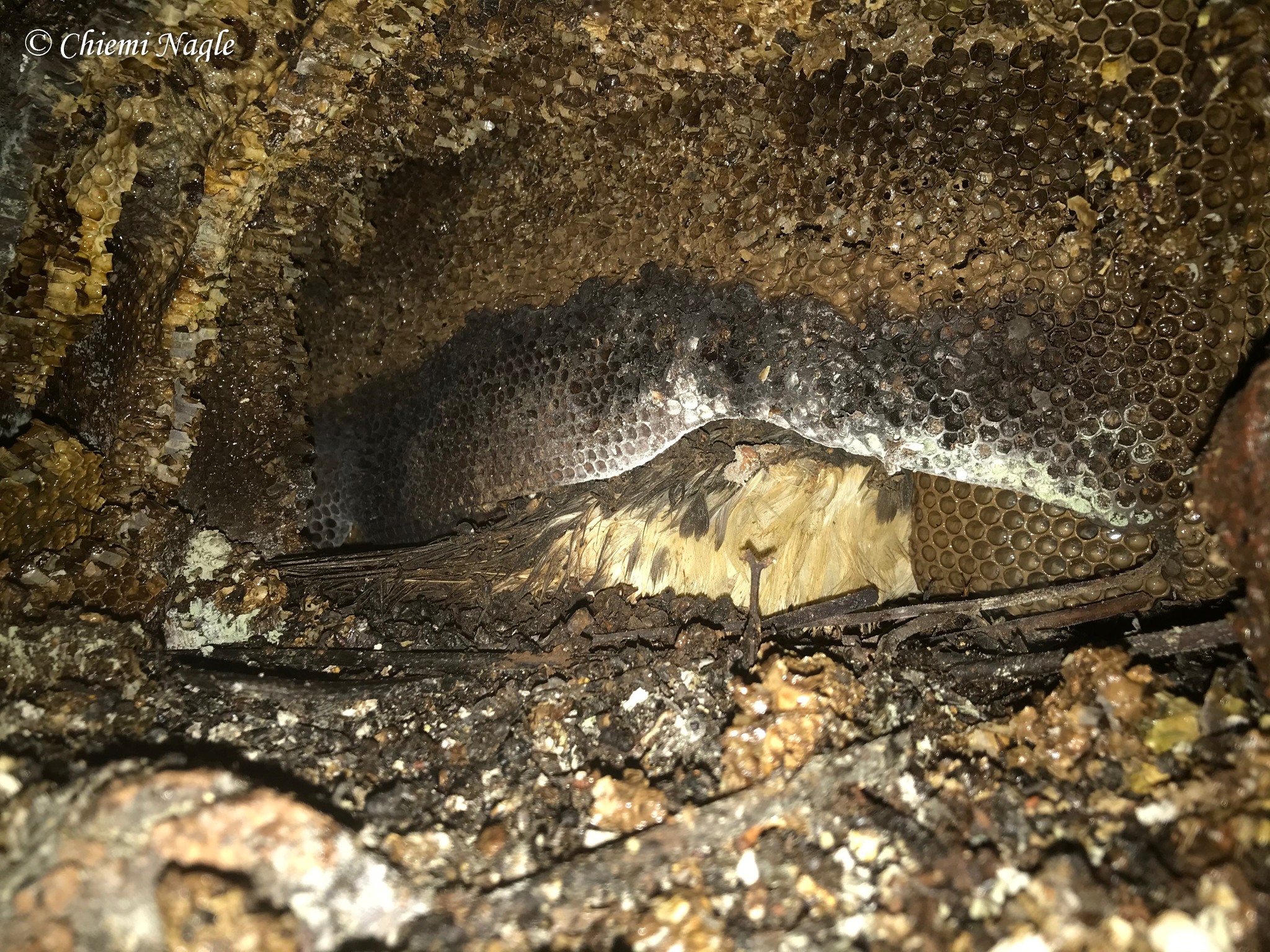
This Hawaiian Petrel (with a wing visible) was found entombed in a bee hive in its burrow in the Upper Limahuli Preserve, Kauai, photograph by C. Nagle
André Raine (Archipelago Research & Conservation, Hanapēpē, Kauai, Hawaii, USA) and colleagues have published in the journal Human–Wildlife Interactions on the impacts of feral honey bees on breeding Endangered Hawaiian Petrels Pterodroma sandwichensis and Critically Endangered Newell’s Shearwaters Puffinus newellii.
The paper’s abstract follows
“The ʻaʻo (Puffinus newellii; Newell’s shearwater) and ʻuaʻu (Pterodroma sandwichensis; Hawaiian petrel) are both endangered seabirds endemic to the Hawaiian Archipelago. For the last decade, multiple colonies on the islands of Kauaʻi and Lānaʻi have been the focus of intensive management (particularly predator control) and monitoring programs. Management has been effective at reducing the number of introduced mammalian predators recorded within colonies with a resultant increase in reproductive success rates for both seabird species. However, in recent years a new threat has emerged—feral honey bees (Apis mellifera; bees)—which were deliberately introduced to the Hawaiian Islands starting in 1857 for beekeeping. Between 2011 and 2021, 17 bee swarms were recorded at seabird burrows on both islands combined, consisting of 14 Hawaiian petrel burrows and 3 Newell’s shearwater burrows. Ten (58.8%) of these incidents resulted in the bees taking over the burrow and building a hive inside. Of the 10 takeovers, all resulted in a failed breeding season in that year, and 6 resulted in a seabird mortality (including 2 instances where both adults of a breeding pair were killed). Furthermore, for burrows where bee takeovers occurred, only 30.0% of pairs reinitiated breeding in the following year, despite the hive being removed as soon as it was discovered. An analysis of microhabitat data revealed that bee swarms were more likely at burrows located at the base of cliff walls. We discuss management strategies that can be implemented, including reactive methods such as bee vacuums and proactive methods such as bee swarm traps using pheromones, to mitigate species conservation threats. Addressing this issue is critical, as climate change may increase the likelihood of these events occurring in the future”.
Reference:
Raine, A.F., Driskill, S., Rossiter, S., Rothe, J., Pias, K.. Sprague, R. & Dutcher, A. 2023. The impact of feral honey bees on endangered seabirds in the Hawaiian islands. Human–Wildlife Interactions 17( 2) doi.org/10.26077/939d-5fe9/.
28 October 2024

 English
English  Français
Français  Español
Español